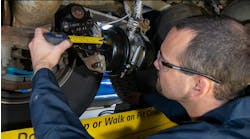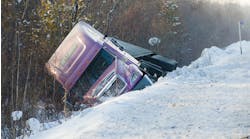In July, the National Bureau of Economic Research (NBER), through its Business Cycle Dating Committee, marked April 2020 as the trough of the pandemic-induced recession. This was determined via real GDP and real GDI (gross domestic income). Because the peak occurred in February 2020, the full recession was two months long, the shortest in U.S. history. It was as severe as it was swift, with 2020 Q2 GDP dropping 32%.
Now that it is over, we can begin to turn our full attention to the process of recovery and expansion.
Over the past several months, we have been discussing with you about current and prospective conditions in the trucking economy using two of our several analytical tools. Truckable Economic Activity (TEA) is the metric MacKay & Company uses to track developments in the overall trucking economy, comprising five key elements: Truckable Consumption, Truckable Investment, Truckable Imports, Truckable Exports, and Truckable Government.
The most recent reports we have about TEA and its components suggest that our forecast of continued expansion (with some bumps along the way) in the trucking economy is playing out pretty much as expected.
Truckable Consumption, the largest part of TEA, has made further progress as the reopening of the economy has proceeded. Truckable Investment, likewise, has made gains as construction activity resumed and manufacturing regained its balance.
Areas of concern
Of concern going forward, however, are the effects of supply chain links that have led to some production interruptions. The semiconductor shortage has been one of the most visible, but truck parts overall are harder to come by, from aftertreatment parts to tires. Limited production, due to plant safety measures lowering capacity, and less availability of raw materials, such as steel, rubber, and other raw materials, have both hindered the ability of equipment manufacturers to provide enough parts.
Two other main areas of concern, for different reasons, are Truckable Exports and Truckable Imports. In the case of Exports, we are having problems with the demand for our exports because of continued disruptions in foreign economic activity. The pandemic is global, and many of our customers are still under more serious constraints than in North America. The result is that they are still not buying as much as they did previously.
With Imports, the problem is the growing inability to move goods through the supply chain. We have bottlenecks in all types of transportation as well as a severe imbalance in the availability of shipping containers. Most of these difficulties will resolve over time, but that does not make them any less problematic now.
Looking ahead
The last component of TEA is Truckable Government. Here we are waiting for news from legislatures around the country. With the Federal infrastructure bill still pending, this metric is still in flux. New spending would unleash of a flurry of trucking activity and drive this metric up.
This is also the time of the year when state budgets are enacted. We will know a great deal more about these matters by the end of the third quarter.
The decision by the NBER to limit the recession months to the period during which the economy was contracting under the immediate effects of the pandemic changes the way we look at what has happened in the trucking economy since May of 2020, which by their reckoning marked the beginning of an expansion.
While the TEA data have indicated a rebound from the worst of the pandemic, their course and composition did not suggest that the rebound from that event was anywhere near complete. As a result, we would argue that rather than having moved into the expansion phase of the business cycle, the trucking economy is still in the recovery stage and appears likely to stay there for the rest of the year.
We will be getting a fresh batch of statistical information about TEA very soon, and we are hopeful that information will help us to better identify the risks and opportunities for the trucking economy in the months ahead.
MacKay & Company specializes in market research for commercial trucking, construction equipment, and agriculture machinery. The company provides strategic research and analyses to vehicle and component manufacturers, distribution and service channels, industry associations, and private equity firms. With a long career managing portfolios and coordinating domestic economic forecasting programs, Dieli began RDLB, Inc. in 2001. In this role, Dieli serves as an advisor to many firms in the truck, consulting, and financial services sectors. He is also an economist with MacKay & Company.




